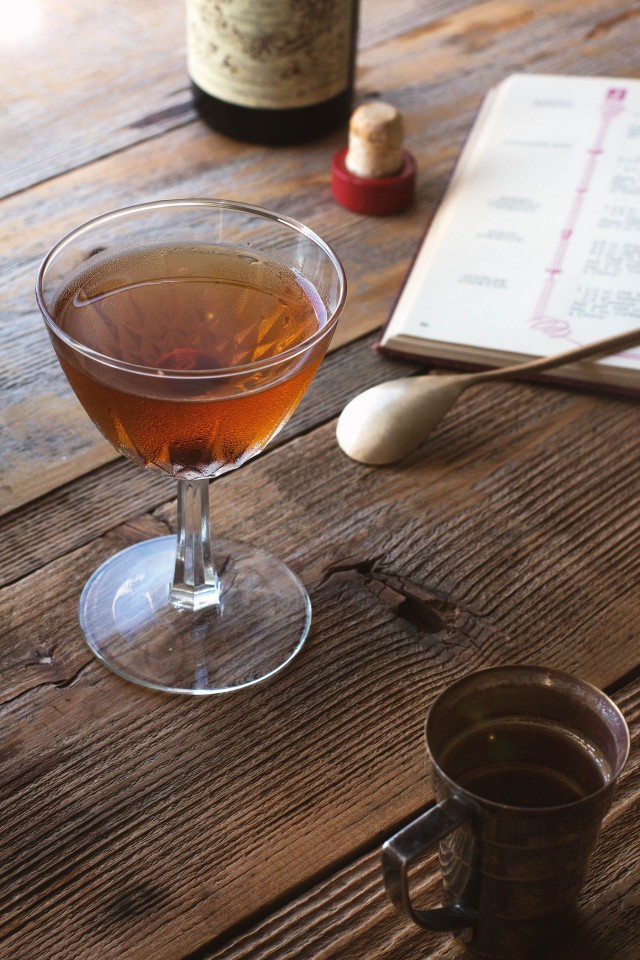

- #Bijou cocktail manual
- #Bijou cocktail professional
Pour all the ingredients in a mixing glass, add ice and stir until chilled. So, this spring why not mix up a jewel of a cocktail? That color combined with those herbal notes makes it the perfect choice for spring or your next backyard barbecue. That green Chartreuse mixed with vermouth provides a beautiful color that makes the cocktail look like a glowing jewel, which incidentally is how the cocktail got its name. If you’re afraid you’re going to lose the classic cocktail in this new iteration though, don’t worry. You still get the herbal notes from the green Chartreuse, but the sweetness from the vermouth isn’t overpowering like it was in the original. So, I tried DeGroff’s version as well as the original. We’re not interested in super sweet cocktails anymore. Today, just like back then, palates have changed. But just because that was the ratio at the turn of the 20th century, doesn’t mean it’s good for the palates of today. Cocktail historian David Wondrich believes that the Chartreuse and vermouth were added to the Bijou because in the late 1800’s “bartenders, seeking to cater to a more sophisticated, cosmopolitan clientele, turned to vermouth and other European aperitifs, digestifs, and cordials to broaden their palettes.” So, in order to do that, the original Bijou was made up of equal parts vermouth, gin and chartreuse with a few drops of orange bitters and a twist of lemon. Light, but potent, this drink is delicious with some serious herbal notes, thanks in no small part to the green Chartreuse. Although DeGroff changed the ratios to adapt to modern palates, all the liquors remained the same. (Use a large bar glass.) glass filled with fine shaved ice 1/3 wine glass chartreuse (green) 1/3 wine glass vermouth (Italian) 1/3 wine glass of Plymouth gin 1 dash of orange bitters. STIR all ingredients with ice and strain into ice-filled glass. 24.90 milliliter Rutte dry gin 15 milliliter Green chartreuse liqueur 24.90 milliliter Martini rosso sweet vermouth. It wasn’t until sometime in the 1980’s that Dale De Groff of New York’s Rainbow Room found the classic drink and served it up at the iconic bar, that the Bijou regained its popularity. Lawlor's 1895 book The Mixicologist as equal parts gin, Grand Marnier and sweet vermouth. But unlike the Martini or Manhattan which remained popular during and after the drought, this cocktail completely fell off the radar. Then, like a lot of the cocktails of that time, it disappeared. Like most well-known classics from the 19th century, the Bijou was very popular until Prohibition. While it doesn’t use any bubbles, it does take gin. Don’t get me wrong, I still like whiskey, but those lighter liquors just seem to make better spring and summer cocktails and they definitely go better with club soda or ginger beer. I tend to go from those dark brown liquors like whiskey and scotch to lighter liquors like gin and vodka. However, for a “modern”, drier version of the original, try:Įither way, the Bijou is a jewel of a drink (sorry, it had to be said).As I’ve said many times before, when the weather changes, so do my liquors. Stir for 30 seconds, then strain into a chilled coupe or Nick and Nora glass. This drink tends towards the sweet which, in my opinion, is one of its delights. Step 1 Fill a mixing glass or a cocktail shaker with ice, and add the gin, vermouth, Chartreuse and bitters. #Bijou cocktail professional
This cocktail was invented by Harry Johnson, 'the father of professional bartending', who called it bijou because it combined the colors of three jewels: gin for diamond, vermouth for ruby, and chartreuse for emerald.

Stir with ice and strain into a chilled cocktail glass. A bijou is a mixed alcoholic drink composed of gin, vermouth, and chartreuse. It is one of those drinks that look deceptively simple on paper but, once tasted, gives one pause to think that though this be madness, yet there is method in’t. It is a no-nonsense libation that achieves it subtlety not from fancy execution, but from the complex nature of its ingredients: the botanicals of the gin, the complex mix of herbs in the Chartreuse, and the spicy sweetness of the vermouth.
#Bijou cocktail manual
The Bijou (jewel in French) comes to us via Harry Johnson’s New and Improved Bartender’s Manual of 1900. When cocktails were not afraid to be cocktails and bartenders were not calling everything a Something-tini.






 0 kommentar(er)
0 kommentar(er)
